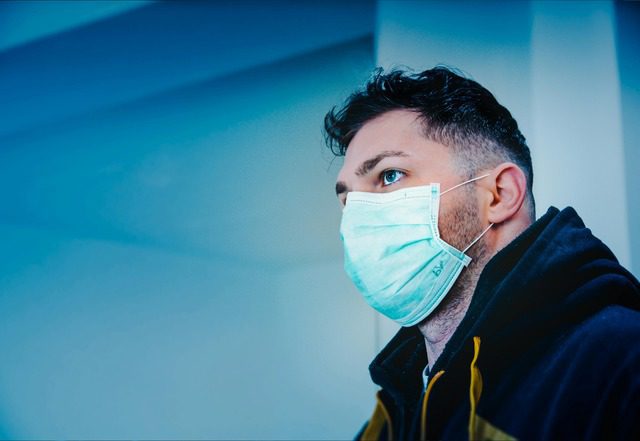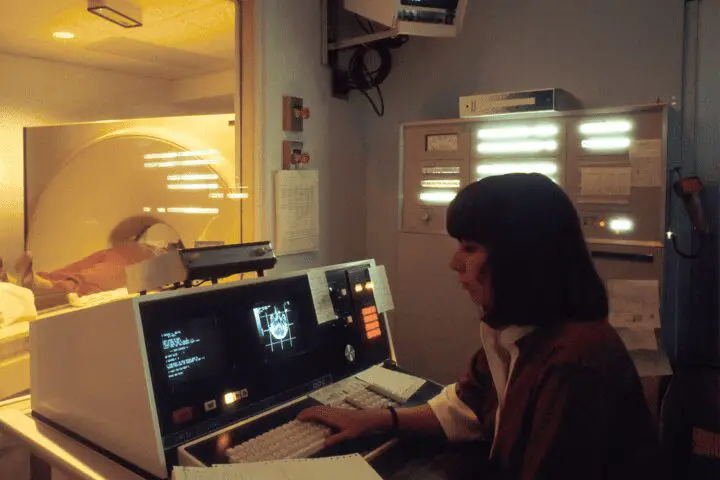Although these orphan diseases afflict millions of the world’s population, due to these ailments coming into view so rarely, they are mostly either underdiagnosed or misdiagnosed. Many such patients have to bear a lot and finally get an appropriate diagnosis after years which results in late treatment.
Here at least partly comes in the difference brought in by AI: the betterment of diagnosis changes lives, instills hope into the lives of patients for certain diseases wherein that seemed to have been lost so long.
Rare Diseases
Rare diseases are those conditions that afflict small percentages of the population. Any disease is considered rare if, in the U.S., it affects less than 200,000 people; upwards of 7,000 are known, though, and taken together they afflict millions worldwide. Many of the diseases are genetic in nature, to which further diagnosis is complicated.
This includes the simple fact that most doctors will never encounter many rare diseases during their careers. With so many conditions, no physician can know them all, and that results in many patients seeing multiple doctors and taking many tests over periods of years. Sometimes this finally leads to a diagnosis.


AI and Rare Disease Diagnosis
Of course, one of the factors that is irrevocably going to change things in helping doctors trace more complex and rare diseases faster, and with much more certainty, will be AI. In this respect, large datasets of symptoms, genetic data, and other data inferred by algorithms bring out patterns that may obscure the human clinical worker’s vision. Some of the ways AI does this are as follows.
- Pattern Recognition: AI easily detects patterns in data-a combination of symptoms or genetic markers indicative of some sort of rare disease, or slight changes in medical images. Among big data over several patients across the globe, algorithms pick up similar traits that might have been left out by the doctors.
Now, imagine some one-in-a-billion disease out there, something virulent, little devil of a thing with its peculiar symptoms. AI finds this and puts it within the circle of possibility. - Genomic Analysis: The reason many ultra-rare types of diseases actually have to do with genetic roots-the huge amounts of data that opened with regards to genomic sequencing have been invaded accordingly by uses of AI. These data are immensely complex, and to analyze them with advanced bioinformatic tools, it would take an immense time span, probably weeks or even months.
Thus, AI algorithms are much quicker in finding the genetic mutations responsible for rare diseases much faster compared to the traditional approach. Of major relevance, this is the fact that it will be important in diseases arising due to mutations from a large number of genes because AI can study the interaction better. - Medical Imaging: A few of those rare diseases actually change the medical images-maybe an MRI or a CT scan-in manners quite detectable. Often, though, the changes are just barely detectable, minute enough so that even a well-trained eye of the radiologist can glance over them.
That is the reason some of the medical imagery can be empowered with AI, which supplies minute signs to add layers for the diagnosis of such so-called rare diseases.


Natural Language Processing
The diagnosis generally comes after many years of history with the patient due to some rare disease. Symptoms or patterns over the years that may lead to a diagnosis get parsed in a few seconds by the NLP-driven AI systems, saving hours of view hence speeding up the process for the doctors. Smooth the Diagnosis Journey
Generally speaking, diagnosis journeys for cases of rare diseases are rather long and irritating. That is where much of that time can be taken out of the equation with AI: since it can analyze medical data and spot signs of a possible rare disease so much better, diagnosis can thus be made that much sooner.
To many, the gravity of early diagnosis is something rather apparent considering other than insight into their conditions, it is often times too frequently the sole way of managing or even curing the said conditions.
Reduced Diagnostic Errors
Misdiagnosis is one of the major problems which have always been associated with what has come to be known as rare diseases. Most patients are normally treated for more common conditions, which present similar symptoms to the rare disease in question.
This will be reduced as AI provides doctors with more data and tools to make a differentiation between the rare from the common conditions. This will avoid those useless years of ineffective treatments and unnecessary sufferings.


Faster Referral to Specialists
Most often, treatment of a rare disease requires the condition to be referred to a specialist doctor conversant with the condition. Artificial intelligence thus helps in flagging potential cases so much earlier. Such doctors will, for one, be in a better position where they then send the patients faster to specialists, economizing time towards the right diagnosis made.
Helping GPs
With the population of over six billion, though most general practitioners will hardly ever encounter any rare disease throughout their practice, the AI may give supportive knowledge and suggestions as to symptoms presented by the patient to give tremendous confidence in diagnosis at identifying an apparent rare disease thus referring the patient for confirmation.
Artificial Intelligence Treatment of Rare Diseases
The challenge following diagnosis, in fact after the diagnosis of any of the rare diseases, is the option of treatment. Not all, but many options have fewer interventions available, or maybe there isn’t any cure. AI too is contributing big time, starting from drug development right up to personalized medicine.
Drug Discovery
Traditional drug development for rare diseases has been very slow and extremely expensive. Conventional low prevalence makes pharmaceutical companies much more reluctant to invest in research and development. AI accelerates drug discovery with the rapid identification of potential drug candidates. This might be carried out similarly in the analysis of existing drugs for their potential repurposing in a given rare disease or how new drugs might interfere with disease pathways.
Personalized treatment plan: Even though a high percentage may be affected by a very rare type of disease presentation in all those will vary. AI in devising a treatment plan, adhering to the genetic configuration, case history amongst others will offer individualized treatment hence more effective. One can call it ‘tailored for an individual rather than routine ‘one size fits all’.
Clinical Trials
In fact, this has signaled one of the major hindrances facing clinical trials in coming up with new treatments for such diseases. AI can address this by identifying in advance participants of such trials directly from their medical records or genetic data. In that way, it will reduce time taken in approval and delivery of new treatments to those in need.


The Role of AI in the Management of Rare Diseases
Besides diagnosis and treatment, AI extends even to daily management. A few of those are some of the ways by which AI finds its place in patient support:
Monitoring Symptoms
These AI-enabled applications can thus enable the patient to monitor the symptoms over time and will also provide useful data to the doctors. It warns them against complications possible or changes in their condition requiring medical intervention.
Virtual Assistants
The virtual assistants in health remind the patients of medication time that is essential for further control of the conditions and update on life changes to help in improving the quality of life, and this has proven to be a big deal of help in such cases as those of complicated conditions that require direction almost every other time.
Telemedicine and Remote Monitoring
Outreach to specialists is highly problematic, especially in cases of these rare diseases occurring in people from unreachable areas. In this respect, AI-enabled telemedicine has made access to many types of specialists easy around the world. It truly offers skilled services without even one travel to patients with restricted travel resources.
Many remote monitoring tools support clinicians who keep track of their patient health closely while informing alterations required about the mode of treatment accordingly.


Challenges and Ethical Considerations
While AI is promising advantages both in diagnosis and treatment, it is equally true that problems come with a number of ethical issues.
Data Privacy
Artificial intelligence works on huge data concerning patients. Ensuring it does not breach any patient’s privacy regarding collection, storage, and usage is very important. Strong protection should be ensured to make certain that data will not be misused.
Bias in AI Algorithms
AI algorithms are only as good as the data they have been trained on, and if biased or incomplete data the AI systems have been trained from then such will the results. It is, therefore, of essence in this regard to research into the rare diseases where some populations might not be represented or under-represented in that data.
Access to AI Technology
Most of the patients are not privileged with all the advanced technologies at hand by AI. Diagnostic and treatment facilities of AI availabilities irrespective of the geographical area and socio-economic status of the patients will be very important in the diagnosis and treatment of the rare diseases to reduce health disparities.
Future of AI in Diagnosis and Treatment of Rare Diseases
Indeed, the future prospects look bright for AI in orphan disease diagnosis and treatment. This is something that holds immense promise for changing the lives of millions suffering from diseases which, so far, never drew mainstream attention. Since further development could be expected with an increase in diagnostics, quicker development of drugs, and increased efficacy of treatments in patients affected with such diseases.
In conclusion, AI is going to bring a game change in diagnostics and therapy related to rare diseases, whether through improvement in the precision of diagnosis or acceleration in drug development. It gives a ray of hope to those patients who desperately look forward to finding solutions in their quest for the same. The recognition of some of the challenges remains, but from the standpoint of what AI is doing in diagnoses and the treatment of the rarest of the rare diseases, the list of benefits certainly seems pretty well cut and dry.































I conceive this website contains some rattling wonderful information for everyone. “Loving someone is easy but losing someone is hard.” by Shelby Harthcock.
I love your blog.. very nice colors & theme. Did you create this website yourself? Plz reply back as I’m looking to create my own blog and would like to know wheere u got this from. thanks